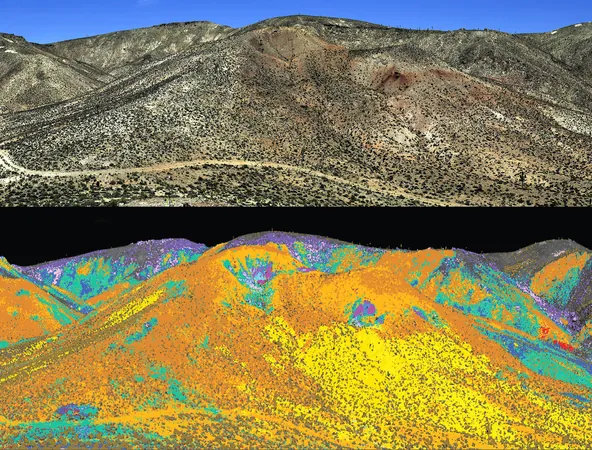
Revolutionary Discovery: Planets Can Form in Extreme UV Environments!
2025-05-22
Author: John Tan
Astronomers Unveil Surprising Planet Formation Findings!
In a groundbreaking revelation, a team of astronomers from Penn State has shown that the materials required for planet formation can survive even in the most extreme conditions of our galaxy. Utilizing data from NASA’s state-of-the-art James Webb Space Telescope (JWST), these scientists have turned their gaze to a distant protoplanetary disk bursting with potential, located in a fierce radiation zone known as the Lobster Nebula.
A Harsh Stellar Nursery: Meet XUE 1!
The spotlight of this exciting study shines on XUE 1, a young star strikingly similar to our Sun, positioned approximately 5,500 light-years away in the Lobster Nebula (NGC 6357). This high-energy zone houses over 20 massive stars, whose intense ultraviolet (UV) radiation is far more extreme than what we usually encounter in nearby star-forming regions. For years, these environments were deemed too inhospitable for the delicate dance of planet formation.
Compact but Potent: The Surprising Nature of XUE 1's Disk!
The Penn State researchers found that XUE 1’s protoplanetary disk contains ample solid material capable of birthing at least 10 Mercury-sized planets. Within this disk, essential molecules such as water vapor, carbon monoxide, carbon dioxide, hydrogen cyanide, and acetylene were also discovered—key players for the atmospheres of future celestial bodies.
What’s more astonishing is the disk’s compact size, spanning just 10 astronomical units (AU)—about the distance from the Sun to Saturn. Researchers speculate that the relentless UV radiation is stripping away its outer layers, yet enough robust material remains in the inner disk to support the formation of new planets.
Challenging Long-Standing Assumptions!
These findings disrupt the long-held belief that only tranquil, low-radiation environments foster planet formation. The implications are vast; they suggest that protoplanetary disks can endure and actively create planetary systems even when bombarded by intense external forces.
By leveraging high-resolution JWST data alongside sophisticated astrochemical modeling, this study provides a comprehensive view of planet formation processes in diverse environments, far beyond the serene stellar nurseries we usually observe.
A Collaborative Triumph!
This remarkable research was a collective effort from scientists across Europe and the United States, involving prestigious institutions like Germany's Max Planck Institute, Stockholm University, and Queen Mary University of London. Funding poured in from NASA, the European Union’s Horizon 2020 program, and various other international organizations.
This study not only highlights the incredible capabilities of the James Webb Space Telescope but also reaffirms the resilience of planet-forming environments in the cosmos. As we unravel these mysteries, it becomes increasingly clear why astronomers are discovering so many planetary systems across the universe!





 Brasil (PT)
Brasil (PT)
 Canada (EN)
Canada (EN)
 Chile (ES)
Chile (ES)
 Česko (CS)
Česko (CS)
 대한민국 (KO)
대한민국 (KO)
 España (ES)
España (ES)
 France (FR)
France (FR)
 Hong Kong (EN)
Hong Kong (EN)
 Italia (IT)
Italia (IT)
 日本 (JA)
日本 (JA)
 Magyarország (HU)
Magyarország (HU)
 Norge (NO)
Norge (NO)
 Polska (PL)
Polska (PL)
 Schweiz (DE)
Schweiz (DE)
 Singapore (EN)
Singapore (EN)
 Sverige (SV)
Sverige (SV)
 Suomi (FI)
Suomi (FI)
 Türkiye (TR)
Türkiye (TR)
 الإمارات العربية المتحدة (AR)
الإمارات العربية المتحدة (AR)